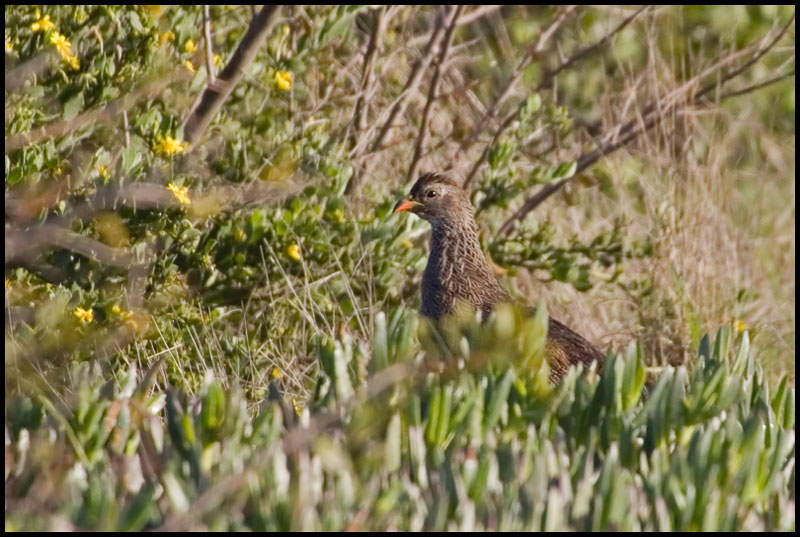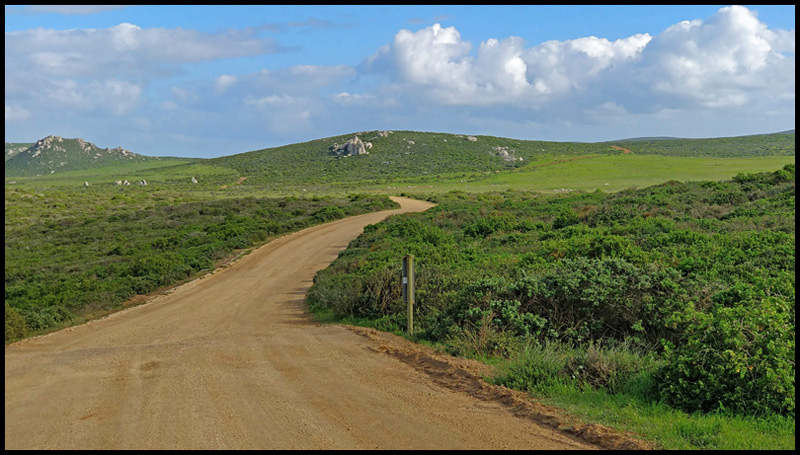Etapas del viaje / Trip sections:
Sudáfrica, el país más austral del continente africano, es conocido por su variada topografía y su gran belleza natural. Se han citado más de 200 especies de mamíferos y hasta 850 de aves en un territorio que ocupa prácticamente el doble que toda la extensión de la Península Ibérica. Todo ello hace que sea un deseado destino turístico para todos aquellos que quieran disfrutar de su naturaleza. Este agosto hemos visitado dos zonas muy distintas. La primera localizada alrededor del Cabo de Buena Esperanza, con un ecosistema basado en el "fynbos". Se trata de un tipo de vegetación formada por matorrales (protáceas, brezos, etc), muy acostumbrada a los frecuentes incendios veraniegos. La segunda zona se localizó al este del país, desde Santa Lucía, pasando por Suazilanda (ahora eSuatini), hasta llegar al famoso Parque Nacional Kruger, principalmente formada por sabana húmeda.
South Africa, the southernmost country on the African continent, is known for its varied topography and great natural beauty. More than 200 species of mammals and up to 850 of birds have been cited in a territory that occupies almost twice the extent of the Iberian Peninsula. All this makes South Africa a desired tourist destination for all those who want to enjoy its nature. This August we visited two very different areas. The first one located around the Cape of Good Hope, with an ecosystem called "fynbos". It is a type of vegetation formed by shrubs and thickets, submitted to frequent summer fires. The second zone was located in the east of the country, from St. Lucia, through Swaziland (now named eSwatini) to the famous Kruger National Park, mainly formed by moist savanna.
La crónica completa del viaje en eBird, incluyendo el mapa y la lista de aves observadas, se puede obtener pinchando en este enlace.
The complete eBird trip report, including map and the list of bird species can be seen in this link.
1. Ciudad del Cabo / Cape Town.
Nuestro avión aterrizó en Ciudad del Cabo el día 7 de agosto y, tras recoger el coche que teníamos reservado en el aeropuerto, nos dirigimos a nuestro hotel, situado en el centro de la ciudad, donde nos alojamos las 2 noches siguientes. Esa misma tarde la dedicamos a visitar un poco la ciudad. En la zona del Castillo de Buena Esperanza ya pudimos ver las primeras especies, como cormorán africano, gaviota plateada sudafricana o estornino alirrojo.
Our plane landed in Cape Town on August 7th, and, once we picked up a car that we had reserved at the airport, we moved to our hotel, located at city center, where we stayed for two nights. We dedicated that afternoon to visit the city. In the area of the Castle of Good Hope we could see our first species, such as African cormorant, Hartlaub's gull or red-winged starling.
En la zona del Castillo de Buena Esperanza pudimos observar un total de 7 especies de aves. La lista en este enlace.
We managed to see 7 different bird species in the area of the Castle of Good Hope. The list can be found in this link.
2. West Coast National Park.
El 8 de agosto, y tras levantarnos pronto, nos dirigimos al West Coast National Park, a una hora escasa en coche del centro de Ciudad del Cabo. Sólo puedo decir que me encantó, y eso que por circunstancias que no vienen al caso no pudimos visitarlo al completo. Entramos por el sur, por la West Coast Gate. Inmediatamente nos recibió el "fynbos" costero. Y enseguida, nada más entrar, las primeras especies, incluyendo francolines de El Cabo, avestruces, yerbera de El Cabo, o bulbul de El Cabo. Entre los mamíferos, algunos raficeros.
On August 8th, we headed to the West Coast National Park, a short drive (less than 1 hour) from Cape Town. I just can say that I loved it. We entered from the south, through the West Coast Gate. Immediately the coastal "fynbos" received us, and as soon as we entered in the park, we had our first sighting of bird species like Cape francolin, common ostrich, Cape grassbird or Cape bulbul. Among mammals, some steenbok.
Nuestro primer objetivo era observar la floración en la Sección Postberg, al noroeste del parque. Aunque era un poco pronto, ya pudimos disfrutar de un buen paisaje repleto de flores. Y que decir de la fauna: cebra de montaña, bontebok y gacelas saltarinas de El Cabo por doquier. Entre las aves, aguilucho negro, apalis acollarado, francolín de el Cabo, estornino bicolor, suimangas acerados y tejedores de El Cabo.
Our first objective was to observe the flowering in the Postberg Section, localted in the northwestern part of the park. Although it was a little early, we could enjoy good landscapes full of flowers. And what about the fauna: mountain zebra, bontebok and Cape sprinbok. Among the birds, black harrier, bar-throated apalis, Cape francolin, african pied starling, southern double-collared sunbird and Cape weaver.
Tuvimos que salir del parque, por motivos personales, por la zona norte (Langebaan gate). Al volver a entrar visitamos el Seeberg Viewpoint y un observatorio cercano. Allí pudimos ver nuestros primeros Elands de El Cabo, y abundantes gorriones de El Cabo, tejedores de El Cabo o suimangas acerados, así como una cerceta de El Cabo solitaria. Con esto tuvimos que finalizar nuestra estancia en el parque, sin poder llegar a visitar los observatorios del Geelbek Visitor Centre. Otra vez será.
We had to leave the park, for personal reasons, through the northern Langebaan gate. Upon entering again, we visited the Seeberg Viewpoint and a nearby bird hide. There we could see our firsts common Elands, and abundant Cape sparrows, Cape weavers or southern double-collared sunbird, as well as a lonely Cape teal. With this we had to finish our stay in the park, without being able to visit the hides inside the Geelbek Visitor Centre. Maybe next time.
La lista completa de especies observadas (aves: 37 especies; mamíferos: 5 especies) y la localización del parque se pueden ver en este enlace.
The complete list of observed species (birds: 37 species; mammals: 5 species) and the location of the park can be seen in this link.






































